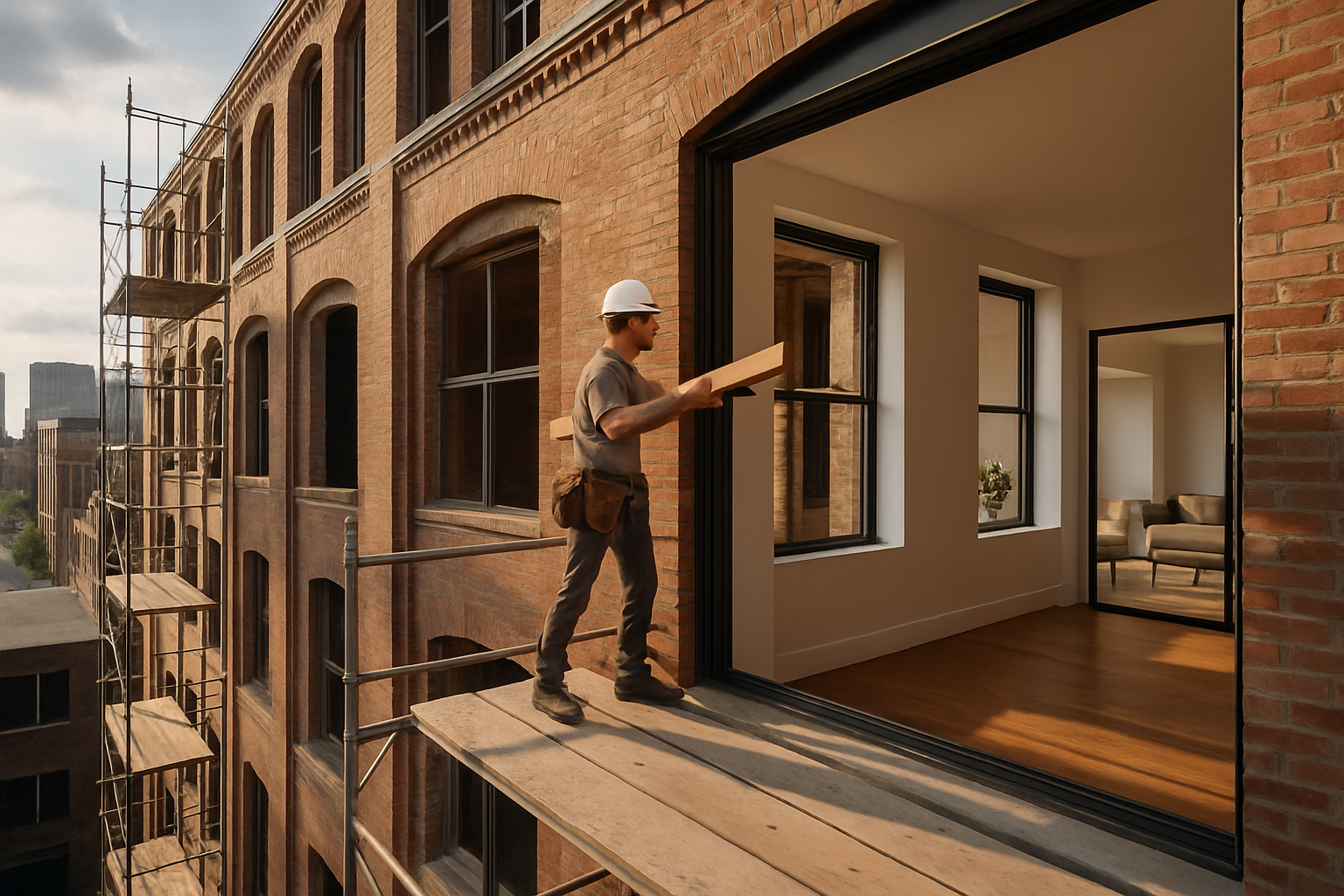Title: Adaptive Reuse: Transforming Commercial Spaces into Residential Gems
In a world where urban landscapes are constantly evolving, an intriguing trend is reshaping the real estate market: adaptive reuse of commercial properties for residential purposes. This innovative approach not only breathes new life into underutilized spaces but also offers unique living experiences for homebuyers seeking character and history in their dwellings. As cities grapple with housing shortages and changing work patterns, the conversion of offices, warehouses, and retail spaces into homes is gaining momentum, presenting both opportunities and challenges for investors and developers alike.

Historical Context and Modern Applications
The concept of adaptive reuse is not entirely new. Throughout history, buildings have been repurposed to meet changing needs. However, the scale and sophistication of modern adaptive reuse projects have reached new heights. From converted factories in New York’s SoHo district to repurposed churches in Europe, the transformation of commercial spaces into residential properties has a rich history that continues to evolve.
Financial Implications for Investors
Investing in adaptive reuse projects can be financially rewarding, but it requires careful analysis. These projects often benefit from lower acquisition costs compared to new construction, especially in prime urban locations. Additionally, many jurisdictions offer tax incentives for the preservation and repurposing of historic buildings. However, investors must also consider the potentially higher renovation costs and the complexities of bringing older structures up to modern residential codes.
Navigating Zoning and Regulatory Challenges
One of the primary hurdles in adaptive reuse projects is navigating zoning laws and building regulations. Many commercial properties are not zoned for residential use, requiring developers to seek variances or zoning changes. This process can be time-consuming and uncertain. Moreover, adapting older buildings to meet current residential standards, particularly in areas like fire safety and accessibility, can be complex and costly.
Design Considerations and Architectural Creativity
Adaptive reuse projects offer unique opportunities for architectural creativity. Designers must balance preserving the building’s historical character with creating functional living spaces. High ceilings, large windows, and open floor plans typical of commercial buildings can become attractive features in residential conversions. However, challenges such as optimizing natural light, creating private outdoor spaces, and managing noise in former industrial settings require innovative solutions.
Market Appeal and Target Demographics
Converted commercial spaces often appeal to specific market segments, particularly young professionals and empty nesters seeking urban lifestyles. These properties offer unique features not found in traditional residential developments, such as industrial aesthetics, historical significance, and prime locations. Marketing strategies for these properties should emphasize their distinctive character and the lifestyle they offer.
Environmental Benefits and Sustainability
Adaptive reuse aligns well with growing environmental concerns in real estate. By repurposing existing structures, developers can significantly reduce the carbon footprint associated with new construction. This approach conserves resources, reduces waste, and often preserves the embodied energy of the original building. As sustainability becomes increasingly important to buyers and regulators, the environmental benefits of adaptive reuse can be a strong selling point.
Case Studies: Successful Transformations
Examining successful adaptive reuse projects provides valuable insights for investors and developers. For instance, the conversion of a former textile mill in Manchester, England, into luxury loft apartments not only preserved a piece of industrial heritage but also catalyzed neighborhood revitalization. Similarly, the transformation of a historic bank building in Chicago into mixed-use residential and retail space demonstrated how adaptive reuse could create vibrant, multi-functional urban environments.
Future Trends and Market Outlook
As urban areas continue to evolve, the potential for adaptive reuse is likely to grow. The ongoing shifts in work patterns and retail habits may lead to an increased supply of underutilized commercial properties, creating new opportunities for residential conversions. Additionally, as cities strive for sustainability and efficient land use, policies encouraging adaptive reuse are likely to become more prevalent.
In conclusion, adaptive reuse represents a compelling frontier in real estate development. It offers a unique blend of historical preservation, sustainable development, and innovative design. While challenges exist, the potential rewards – both financial and societal – make this an exciting area for investors, developers, and urban planners. As the real estate market continues to evolve, adaptive reuse is poised to play a significant role in shaping the future of urban living.





